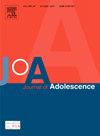From Burden to Enjoyment: A User-Centered Approach to Engage Adolescents in Intensive Longitudinal Research
Abstract
Introduction
Adolescent psychology is embracing intensive longitudinal methods, such as diaries and experience sampling techniques, to investigate real-life experiences. However, participants might perceive the repetitive self-reporting in these data collection techniques as burdensome and demotivating, resulting in decreased compliance rates. In this tutorial paper, we present a user-centered approach aimed at making participation in experience sampling and daily diary studies a meaningful and fun experience for adolescents.
Methods
In three major research projects that took place between 2019 and 2023, more than 4,000 Dutch adolescents participated (12–25 years old). To improve the participants' user journey, adolescents were invited to codesign our studies and share their expertise in interviews (n = 459), focus groups (n = 101), design decisions (i.e., A/B tests, n = 107), pilots (n = 163), exit interviews (n = 167), and by answering user experience questionnaires (n = 2,109).
Results
Across projects, we discovered five different main intrinsic and extrinsic motives to participate in intensive longitudinal studies: (1) rewards, (2) fun and interest, (3) helping science or the greater good, (4) helping the scientist or another person, and (5) gaining self-insight. We provide concrete examples of how we tailored our study designs to address these specific motives to optimize youth engagement.
Conclusions
The engagement of adolescents in intensive longitudinal studies can be enhanced by making it a meaningful and enjoyable experience, aligned with their own motives.

 求助内容:
求助内容: 应助结果提醒方式:
应助结果提醒方式:


